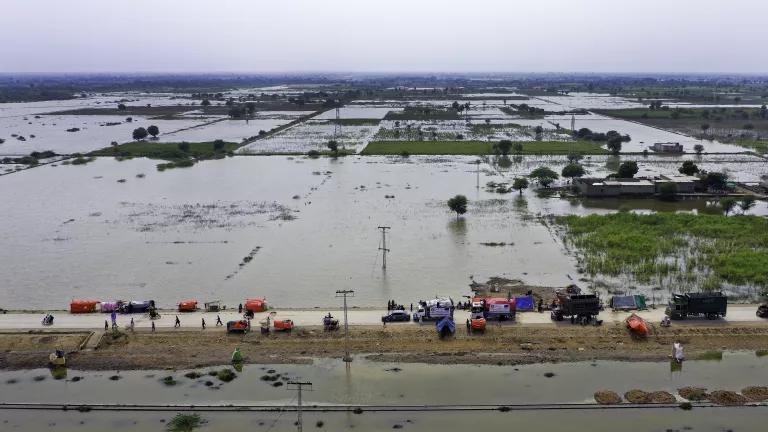
In May of 2016, EPA finalized the first national standards for limiting methane from the oil and natural gas sector, the nation’s largest industrial source of this climate destabilizing pollution. These standards will address new and modified sources of methane pollution—a potent climate pollutant more than 80 times more powerful than CO2 over the first 20 years. The standards will also help to reduce harmful ozone forming pollutants and toxic contaminants like benzene, a known human carcinogen, that are released with the methane gas.
While these standards will take on methane from new oil and gas development, the vast majority of dangerous methane pollution from the oil and gas industry—along with toxic air pollution—is already leaking from existing sources in the sector. In order to make significant progress in cleaning up the industry’s methane problem, EPA must tackle the pollution from the existing oil and gas infrastructure around the country next, and soon. These sources will continue to leak methane and toxic air pollutants in communities across the country for years to come, unless EPA steps up to limit methane and other pollutants like benzene from existing oil and gas infrastructure.
Just where is this infrastructure located? Last week a useful new tool was released that maps the locations of oil and gas facilities across the U.S. and the populations, schools and hospitals within a half mile radius of those facilities. Studies have found links between living near many oil and gas facilities and negative health impacts, including fetal defects and hospitalizations
Right now, the oil and gas industry is recklessly leaking millions of tons of methane pollution and toxic chemicals such as benzene, naphthalene, and formaldehyde into the air that harm our health and speed up climate change. That pollution can have health impacts on the communities surrounding oil and gas development. In fact, the results of a recent scientific review of hundreds of studies found overwhelming evidence of health threats from air pollution—87% of air quality studies found elevated air pollutant emissions and/or atmospheric concentrations.
The Map calculates the total population, schools and medical facilities within a ½ mile threat radius of an oil and gas facility at the national, state and county level. Although the impact of each individual facility reflects the specific details of emissions, weather, and geography, multiple studies have raised concerns about unsafe exposures and health impacts within a ½ mile radius.
Across the country, it is found that 12.4 million people live within a half mile radius of the 1.2 million active oil and gas wells, compressors, or processor stations in the United States. Additionally, there are 11,543 schools and 639 medical facilities within that half mile radius of active oil and gas facilities.
The Oil and Gas Threat Map also displays estimates for counties where oil and gas pollution is contributing to increased risk of cancer and respiratory disease. This analysis can show you whether EPA’s own emissions data indicates unsafe pollution but unfortunately data gaps and analytical limitations mean that areas that don’t show up on the map may also be at risk.
In addition, the Map links to more than 50 video testimonials from citizens who are negatively impacted by air pollution associated with oil and gas facilities. Through more than 100 infrared videos, the Map also makes visible normally invisible pollution from oil and gas facilities across the country.
The Oil and Gas Threat Map links the stories and struggles of communities across the country and shows the pressing problem that oil and gas pollution poses to our public health—making clear that safeguards are urgently needed to protect the public from existing sources of methane and other air pollution.
You can thank President Obama and EPA for taking the important first steps to limit methane pollution from new sources, and urge them to address the rest of the methane and air toxics problem, here.



